Cercocarpus montanus, Mountain Mahogany
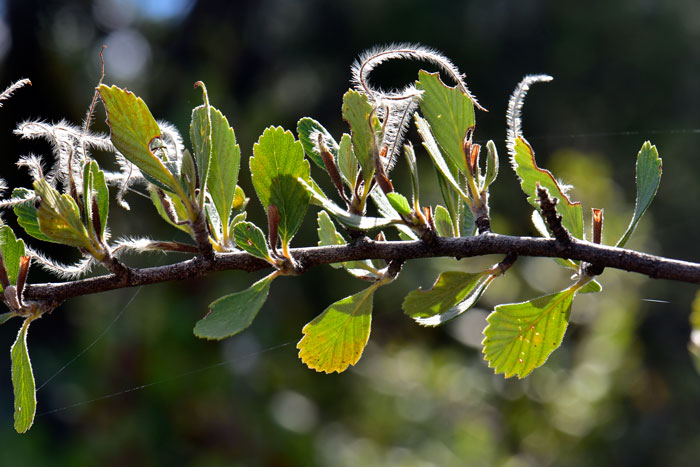
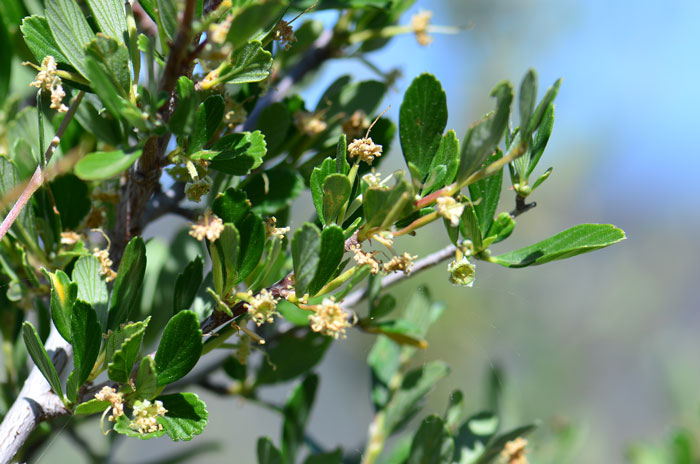
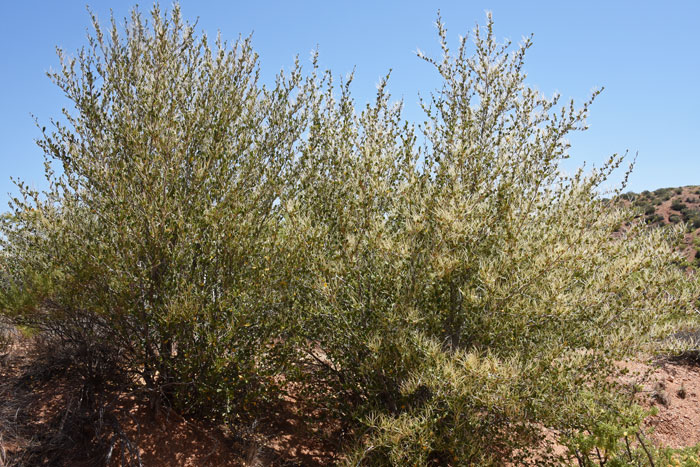
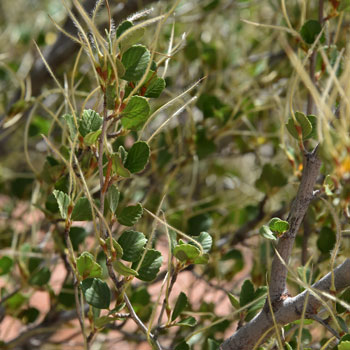
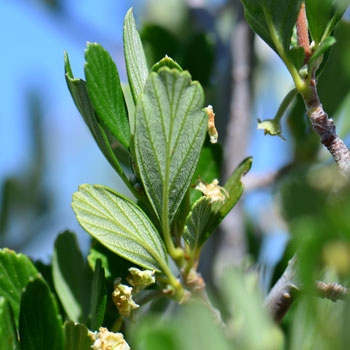
Scientific Name: Cercocarpus montanus
Common Name: Mountain Mahogany
Also Called: Alderleaf Cercocarpus, Alderleaf Mountain Mahogany, Alder-leaf Mountain-Mahogany, Birchleaf Mountainmahogany, Hardtack, Mountainmahogany, Silver Mountain Mahogany, True Mountain Mahogany, True Mountainmahogany (Spanish: Palo Duro)
Family: Rosaceae or Rose Family
Synonyms: ()
Status: Native
Duration: Perennial
Size: Up to 15 feet or so; up to 20 feet in Texas.
Growth Form: Shrub, tree; form is erect to spreading multiple branches; occasionally evergreen.
Leaves: Green, often dull green, white or whitish beneath; alternate; clusters of leaves common on short spur-like branches; prominently veined beneath; simple; leaf shape variable, from widely obovate to ovate to lanceolate; small petioles; margins entire and coarsely dentate with ovate teeth.
Flower Color: Yellowish sepals, without petals; flowers solitary or in small clusters; flowers perfect; numerous stamens; 1 pistil; fruit with long, persistent, plumose style exserted; flowers wind pollinated.
Flowering Season: April to June in Arizona; May to November in Texas.
Elevation: 4,500 to 7,000 feet; up to 4,000 feet in California.
Habitat Preferences: Chaparral communities, Arizona often in pinyon-juniper habitats.
Recorded Range: Cercocarpus montanus is found primarily throughout the western ½ of the United States in AZ, CA, CO, ID, KS, MT, NE, NM, NV, OK, OR, SD, TX, UT, WY. In Arizona they occur throughout most of the state in preferred habitats. They are also native to Baja California and central and northern Mexico.
North America & US County Distribution Map for Cercocarpus montanus.
U.S. Weed Information: No information available.
Invasive/Noxious Weed Information: No information available.
Wetland Indicator: No information available.
Threatened/Endangered Information: No information available.
In Arizona, Nevada and Utah there are 3 species of Cercocarpus, in California there are 4 species, New Mexico has 2 species and Texas has 1 species. All data is approximate and subject to taxonomic changes.
There are 7 varieties in Cercocarpus montanus;
Cercocarpus montanus var. argenteus, Silver Mountain Mahogany (CO, NM, TX);
Cercocarpus montanus var. blancheae, Island Mountain Mahogany (CA);
Cercocarpus montanus var. glaber, Birchleaf Mountain Mahogany (AZ, CA, OR, MT);
Cercocarpus montanus var. macrourus, Klamath Mountain Mahogany (CA, OR);
Cercocarpus montanus var. minutiflorus, Smooth Mountain Mahogany (CA);
Cercocarpus montanus var. montanus, Alderleaf Mountain Mahogany (AZ, CO, ID, KS, MT, NE, NM, NV, OK, OR, SD, UT, WY);
Cercocarpus montanus var. paucidentatus, Hairy Mountain Mahogany (AZ, NM, TX).
Comments: Cercocarpus montanus as with other members of Rosaceae in Arizona provides excellent browse for deer, sheep and livestock. It is a hardy species with the ability to withstand many common hazards including heavy browsing, lack of rainfall, fire. This species is beneficial species to a host of western American indigenous peoples.
For a comprehensive thoroughly documented review of Cercocarpus montanus see the USDA USFS Fire Effects Information System, or FEIS.
Cercocarpus montanus has been used for a multitude of purposes by many North American indigenous peoples.
Isleta Dye, Red, Root bark, alder root bark and wild plum root bark used to make a red dye for buckskin.
Jemez Dye, Red, Bark, alder bark and birch bark boiled together and used as red dye to paint moccasins.
Keres, Western Drug, Strengthener, Infusion of leaves used as a strengthener.
Keres, Western Other, Hunting & Fishing Item, Wood made into arrow points.
Navajo Fiber, Building Material, Wood used to make the handle of the weaving distaff, dice and the sweathouse for ceremonies.
Tewa Drug, Laxative, Cold infusion of plant or leaves taken as a laxative.
Apache, White Mountain Drug, Burn Dressing, Wood burned, the charcoal powdered and applied to burns.
California Indian Other, Smoking Tools, Root used to make pipe bowls.
Hopi Other, Ceremonial Items, Wood used to make pahos (prayersticks)
See ethno-botanical uses at Native American Ethnobotany, University of Michigan, Dearborn.

